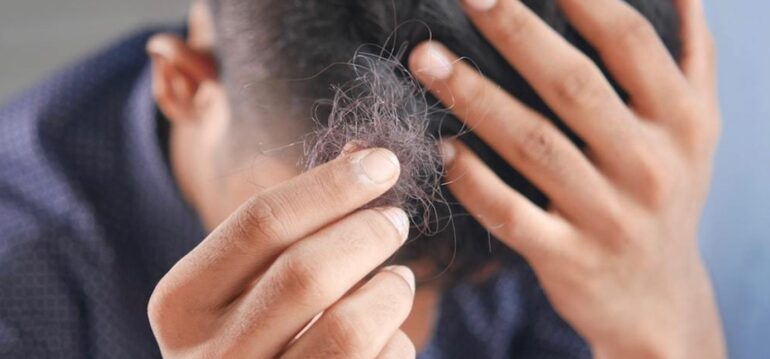
Discover what makes hair follicles die as we explore the causes and solutions for hair loss, including genetics, hormonal imbalances, and effective treatments.What makes hair follicles die? This question has puzzled scientists and those experiencing hair loss for years.In this article, we’ll begin by discussing the various causes of hair follicle death, ranging from genetics to external influences. We’ll investigate how hereditary can significantly affect conditions such as male pattern baldness and how hormonal imbalances can lead to weakened or dead hair follicles.Understanding what makes hair follicles die is crucial for developing effective treatments and preventative measures.So join us as we unravel this complex topic and provide valuable insights into maintaining healthy hair growth throughout your lifetime.Table of Contents:
Hair follicles are fundamental for hair growth, and their condition is critical to the look and feel of our locks. However, various factors cause hair follicles to die or become inactive, leading to thinning or baldness in both men and women.This section will explore what leads to hair follicles becoming inactive or dying and how it impacts our hair’s health.GeneticsGenetics play a significant role in determining the lifespan of your hair follicles. Some individuals inherit genes that make them more susceptible to male pattern baldness, also known as Androgenetic Alopecia (AGA). This condition is characterised by a gradual shrinking of the terminal hairs on the scalp due to increased dihydrotestosterone (DHT) levels – a hormone derived from testosterone.Ageing ProcessThe ageing process naturally affects our entire body, including our hair growth cycle. As we age, the stem cells responsible for maintaining healthy hair gradually decline in number and function, resulting in fewer new hairs growing back after each shedding phase (telogen phase). Additionally, older adults may experience decreased blood flow to their scalp, further contributing to weakened or dying hair follicles.Hormonal ImbalancesHormones directly impact how well our hair grows, with imbalances often causing disruptions within the normal growth cycle (anagen phase). Women may suffer from hair thinning due to hormonal variations during pregnancy or the menopausal stage. In contrast, men with high levels of DHT – a by-product of testosterone – can suffer from male pattern baldness as the hormone attacks and weakens their hair follicles.Environmental StressesExternal factors such as pollution, exposure to harmful chemicals, and excessive heat styling can also contribute to the death of hair follicles. These stresses damage your scalp’s health by causing inflammation or irritation that disrupts regular hair growth cycles, leading to weaker strands prone to breakage and shedding.Nutritional Deficiencies
- Iron: Iron deficiency is one of the most common nutritional deficiencies linked with hair loss. It plays a crucial role in transporting oxygen through our bloodstreams which helps maintain healthy cell function within our bodies – including those responsible for stimulating new hair growth (stem cells).
- Zinc: Zinc is essential for maintaining proper protein synthesis within our bodies; without it, we cannot produce keratin – the primary structural component in human hairs.
- Biotin: Biotin (Vitamin H) supports healthy skin and nails while promoting strong hair growth by producing amino acids necessary for creating keratin.
- Androgenetic Alopecia: Also known as male or female pattern baldness, it’s characterised by a receding hairline (in men), thinning at the crown area (in women), or overall diffuse thinning across the scalp.
- Alopecia Areata: An autoimmune disorder that causes patchy hair loss, often in small circular areas. While not solely genetic, research has shown a strong familial link.
- Cicatricial Alopecia: A group of rare disorders characterised by scarring and permanent hair loss due to inflammation or damage to the hair follicles. Some forms have been linked to genetic mutations.
- Minoxidil (Rogaine): An over-the-counter topical solution applied twice daily to the scalp. It helps increase blood flow and nutrient delivery to the hair follicles, promoting growth.
- Finasteride (Propecia): A prescription medication is taken orally once daily that inhibits DHT production, preventing further miniaturisation of susceptible hairs.
- Laser Therapy: Low-level laser therapy devices emit red light wavelengths believed to stimulate cellular activity within the hair follicles and promote regrowth.
- Hair Transplants: Surgical procedures like Follicular Unit Extraction (FUE) involve removing healthy hairs from one area of your head and transplanting them into thinning or balding areas. For example, the Harley Street Hair Clinic offers advanced FUE techniques with natural-looking results.
- Hyperthyroidism: Excess thyroid hormone production speeds up your body’s metabolic processes, which may increase shedding as hairs enter their telogen phase more rapidly than usual.
- Hypothyroidism: Insufficient thyroid hormone production slows down your body’s metabolic processes, causing a decrease in blood flow to the scalp and depriving hair follicles of necessary nutrients for healthy growth.
- Hormone replacement therapy (HRT): For women experiencing menopausal symptoms alongside their hair loss issues due to low oestrogen levels might benefit from HRT under medical supervision.
- DHT blockers: Medications such as finasteride work by blocking DHT conversion from testosterone; this helps slow down male pattern baldness progression and may even promote hair regrowth.
- Thyroid hormone replacement: Individuals with hypothyroidism might be prescribed synthetic thyroid hormones like levothyroxine to help regulate their body’s metabolism and support healthy hair growth.

